Discover the ideal garden spots for growing rhubarb. Learn about sunlight, soil, and spacing requirements to cultivate thriving, flavorful rhubarb plants in your backyard.
Rhubarb thrives in cool, temperate climates and grows best in well-drained, fertile soil with full sun to partial shade. Ideal garden locations for rhubarb include areas with consistent moisture, protection from strong winds, and space for its large leaves to spread. This guide explores the optimal conditions for growing robust, flavorful rhubarb in your garden.
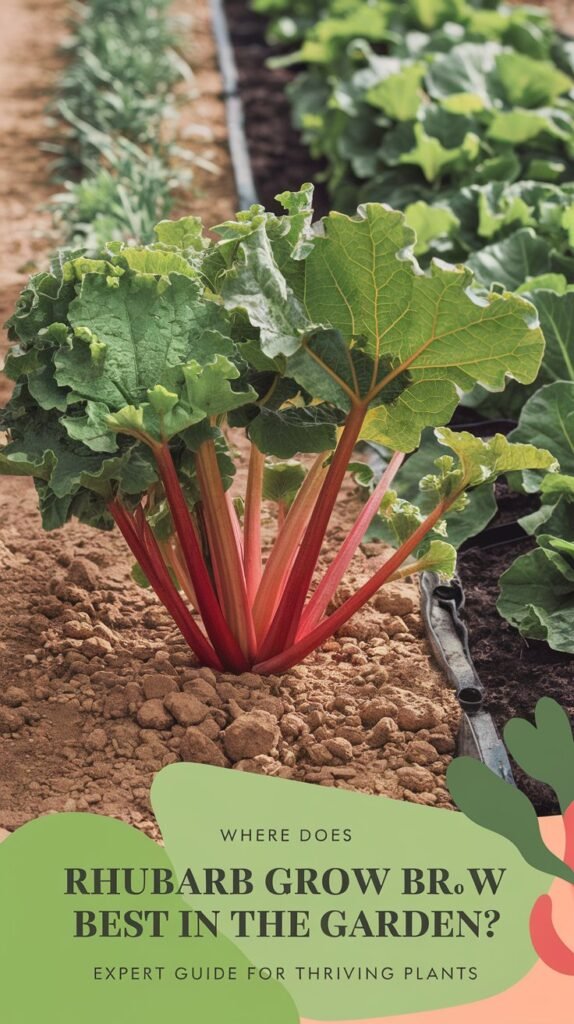
As a horticulturist with over two decades of experience in cultivating perennial vegetables, I’m excited to share my expertise on growing rhubarb. This tart and tangy plant has been a garden favorite for centuries, and with good reason. Let’s delve into the perfect garden conditions for rhubarb success!
Why Location Matters for Rhubarb
Before we explore the best garden spots for rhubarb, let’s understand why location is crucial:
- Affects plant vigor and productivity
- Influences flavor development
- Impacts disease resistance
- Determines the length of the growing season
- Affects the plant’s lifespan (rhubarb can live up to 20 years!)
Now, let’s break down the key factors that make up the ideal rhubarb growing location.
Key Factors for Ideal Rhubarb Garden Locations
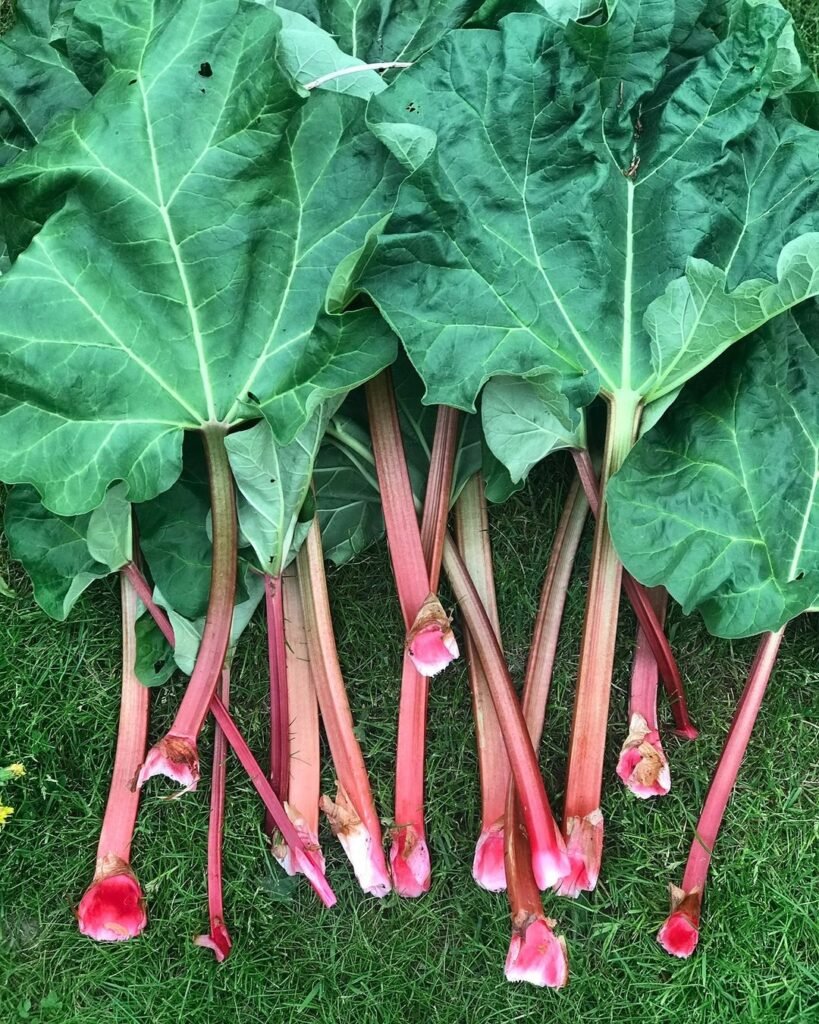
1. Sunlight Exposure
Optimal Condition: Full sun to partial shade
Why It’s Important: Adequate sunlight ensures robust growth and flavor development.
How to Achieve It:
- Choose a spot that receives 6-8 hours of direct sunlight daily.
- In hotter climates, provide afternoon shade to prevent leaf scorching.
2024 Trend: Climate-adaptive gardening is gaining popularity, with gardeners using temporary shade structures during heat waves.
Pro Tip: Monitor your garden’s sun patterns throughout the day to find the perfect spot.
2. Soil Quality
Optimal Condition: Rich, well-draining soil with high organic content
Why It’s Important: Nutrient-rich soil promotes healthy growth and disease resistance.
How to Achieve It:
- Amend soil with compost or well-rotted manure before planting.
- Ensure soil pH is between 6.0-6.8 for optimal nutrient uptake.
2024 Update: New soil testing kits are making it easier for home gardeners to assess and adjust their soil quality.
Pro Tip: Prepare the soil deeply (up to 12 inches) as rhubarb has an extensive root system.
3. Drainage
Optimal Condition: Well-draining soil that retains some moisture
Why It’s Important: Proper drainage prevents root rot while ensuring consistent moisture.
How to Achieve It:
- Choose slightly elevated areas or create raised beds.
- Incorporate organic matter to improve soil structure.
2024 Innovation: Smart irrigation systems are helping gardeners maintain optimal soil moisture levels for rhubarb.
Pro Tip: If your soil is heavy clay, consider planting rhubarb in raised beds for better drainage control.
4. Space and Air Circulation
Optimal Condition: Open area with good air flow
Why It’s Important: Proper spacing and air circulation reduce disease risk and promote healthy growth.
How to Achieve It:
- Plant rhubarb 3-4 feet apart.
- Avoid planting near walls or in crowded garden areas.
2024 Trend: Vertical gardening techniques are being adapted to create air flow in small gardens.
Pro Tip: Consider the mature size of rhubarb when planning your garden layout.
5. Protection from Elements
Optimal Condition: Sheltered from strong winds but not enclosed
Why It’s Important: Wind protection prevents damage to large leaves while maintaining air circulation.
How to Achieve It:
- Use natural windbreaks like fences or shrubs.
- Avoid low-lying areas prone to frost pockets.
2024 Research: Studies are exploring the use of companion planting for natural wind protection in vegetable gardens.
Pro Tip: Observe your garden during windy days to identify naturally sheltered areas.
6. Soil Temperature
Optimal Condition: Cool soil temperatures, especially in spring
Why It’s Important: Rhubarb is a cool-season crop that thrives in lower temperatures.
How to Achieve It:
- Plant in areas that warm up slowly in spring.
- Use mulch to maintain cool soil temperatures.
2024 Update: New varieties of rhubarb with improved heat tolerance are being developed for changing climates.
Pro Tip: Plant rhubarb on the north side of taller plants for natural cooling effects.
7. Water Availability
Optimal Condition: Consistent moisture without waterlogging
Why It’s Important: Rhubarb needs regular watering, especially during dry spells and the growing season.
How to Achieve It:
- Choose a location near a water source for easy irrigation.
- Implement a consistent watering schedule.
2024 Innovation: Rainwater harvesting systems are becoming more sophisticated, providing sustainable irrigation solutions for home gardens.
Pro Tip: Use drip irrigation or soaker hoses to provide consistent moisture directly to the roots.
Best Practices for Rhubarb Garden Placement
To ensure the best results when choosing a location for your rhubarb:
- Consider crop rotation if replanting rhubarb in the same garden.
- Avoid areas where water tends to pool after rain.
- Keep rhubarb away from trees and shrubs that might compete for nutrients and water.
- Plan for the long-term, as rhubarb plants can live for many years.
- Consider the aesthetic impact of rhubarb’s large leaves in your garden design.
Creating the Perfect Rhubarb Haven
Selecting the ideal location for your rhubarb plants is a crucial step in ensuring a bountiful and long-lasting harvest. By considering factors like sunlight, soil quality, drainage, and protection from the elements, you can create the perfect environment for these hardy perennials to thrive.
Remember, while rhubarb is generally adaptable, providing it with optimal growing conditions will reward you with vigorous plants and flavorful stalks year after year. Whether you’re planning a dedicated rhubarb patch or incorporating these plants into your existing garden, thoughtful placement is key to success.
For more information on growing rhubarb and other perennial vegetables, visit resources like the National Gardening Association or your local cooperative extension office. Happy gardening, and may your rhubarb patch be the envy of the neighborhood!
For more gardening tips and plant care guides, visit usagardenhub.com.

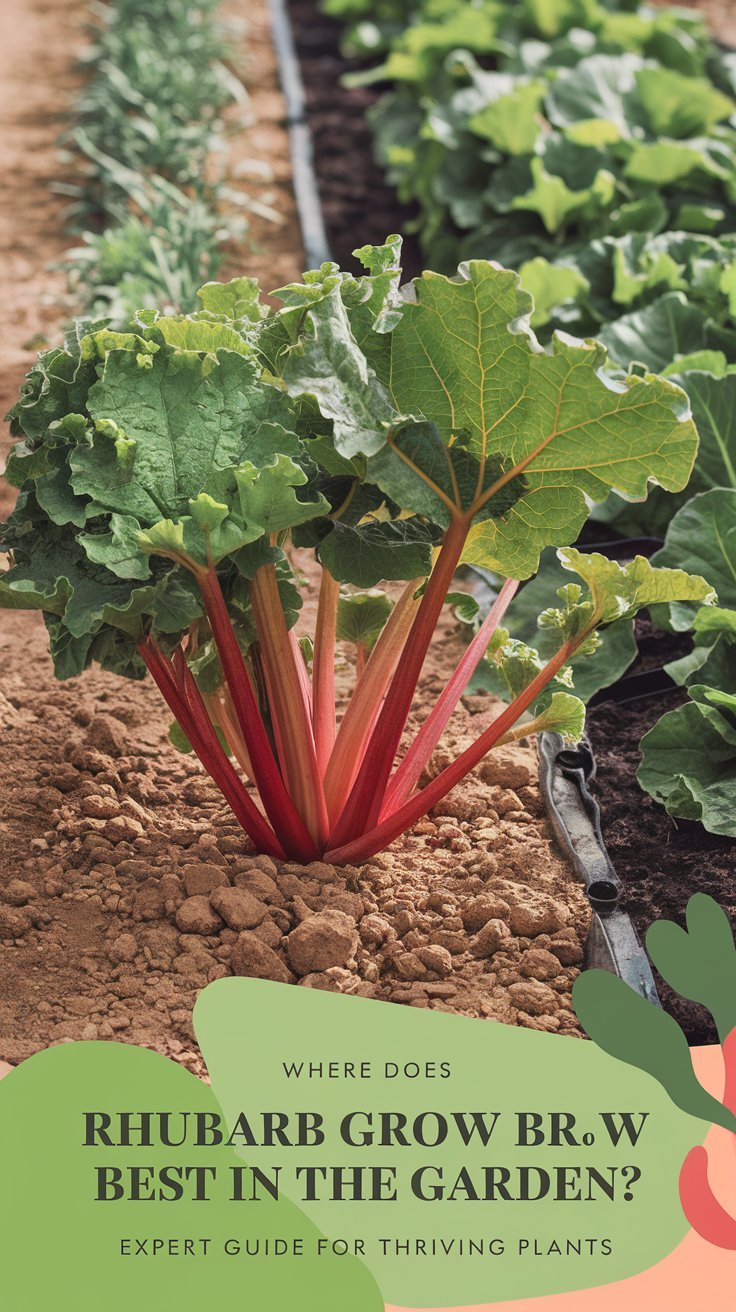
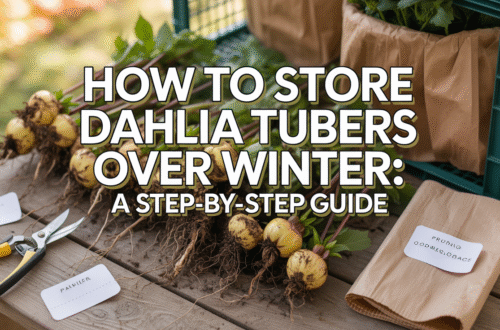
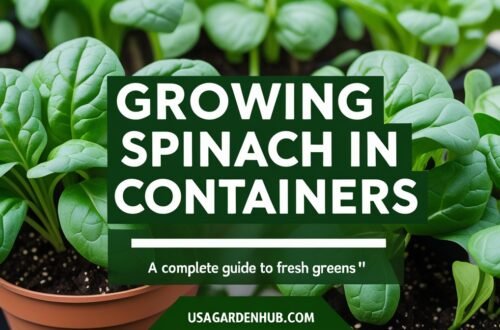

One comment on “Where Does Rhubarb Grow Best In The Garden? Expert Guide for Thriving Plants”